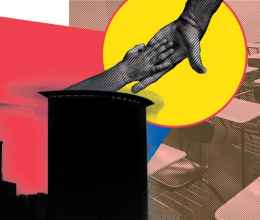At least 27 states and Washington D.C. have begun releasing racial breakdowns of COVID-19 in their jurisdictions. The data released so far has shown that by in large Black people are dying at disturbingly disproportionate rates. For example, Black people represent 43 percent of COVID-19 deaths in Illinois, but make up only 14 percent of the state’s population. In Louisiana, Black people make up 32 percent of the state but represent almost 60 percent of COVID-19 related deaths. Similarly alarming, in Mississippi, Black people make up 38 percent of the population but represent 52 percent of COVID-19 cases and 63 percent of reported deaths. Cities with larger Black and Latino communities are especially seeing the inequalities in COVID-19 cases and deaths. In Milwaukee, Black people make up 53 percent of people who have died from COVID-19, while making up only 39 percent of the city’s population. In New York City, which now has more confirmed cases than anywhere else in the world, Latinos make up 29 percent of the population but 34 percent of COVID-19 deaths and Black people make up 22 percent of the population but 28 percent of deaths.
Our fear is this same trend of minority overrepresentation in COVID-19 infections and deaths is occurring in Ohio. Current data collected by the state suggests this to be the case. According to the Ohio Department of Health’s COVID-19 dashboard, Ohio’s five hardest hit (excluding Marion County, which now ranks in the top five counties in Ohio due to the explosion of cases in their state prison) counties - Cuyahoga, Franklin, Hamilton, Lucas, and Mahoning account for 51 percent of all cases, 51 percent of hospitalizations, and 41 percent of deaths. The Black population of those counties are 30.5, 23.5, 26.6, 20.3, and 16.1 percent respectively – all higher than the statewide rate of 13 percent.
Dr. Amy Acton continues to encourage suspected COVID-19 patients coming into our hospitals to fill out there demographic information on hospital intake forms. We believe this is the right course of action. There is a compelling state interest to encourage disclosure of this demographic data. Identifying these hotspots and infection disparities is critically important for Ohio to successfully eradicate the spread of this virus. This is why we are pleased Governor DeWine and Health Director Acton have moved to include this kind of demographic data in the daily reports of COVID-19 cases. We know that social determinants of health play a key factor in what communities are most susceptible to infection and community spread.
This is not a new phenomenon. Unfortunately in Ohio, as well as most of the country, communities with poor determinants of health often coincide with communities of higher Black and brown populations. The members of these communities are more likely to be uninsured and live in communities without access to quality healthcare facilities, leading to disproportionate rates of chronic diseases such as asthma, hypertension, and diabetes. Additionally, these communities do not enjoy the privilege of being able to work from home like more affluent, and frankly whiter, communities. Black and Latina women are overrepresented as essential workers with Latina women making up 22 percent of women grocery store workers and Black women making up 27 percent of women home health aid workers. In addition, people of color are overrepresented in industries that are rapidly laying off workers, leaving many uninsured.
COVID-19 has not created this problem, but it is reinforcing how serious of a problem this is. Ohio needs to look itself in the mirror and commit to making significant, and continuous, investments in these vulnerable communities.








